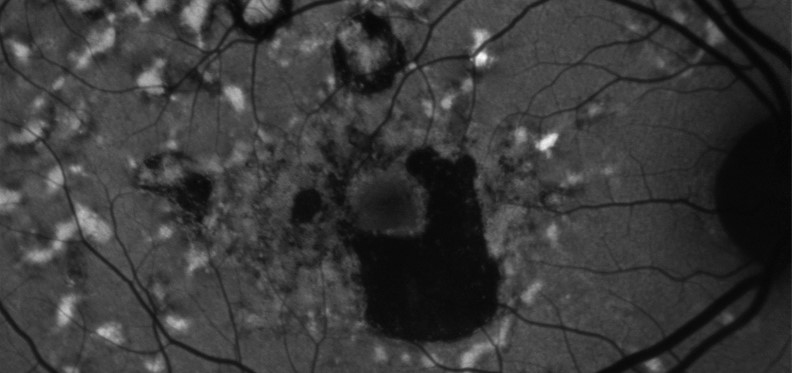Deep learning segmentation of hyperautofluorescent fleck lesions in Stargardt disease
 Using deep learning to segment and quantify FAF lesions, laying the foundation for future studies using fleck parameters as a trial endpoint.
Using deep learning to segment and quantify FAF lesions, laying the foundation for future studies using fleck parameters as a trial endpoint.
The challenge
Stargardt disease is the most common form of inherited retinal disease that leads to permanent vision loss.
A diagnostic feature of the disease is flecks that appear hyperautofluorescent in fundus autofluorescence (FAF) imaging.
The size and number of these flecks increase as disease progresses. Manual segmentation of these flecks allows monitoring of disease. However, this process is very time-consuming.
Our response
We’ve developed and validated a deep learning approach for segmenting these Stargardt flecks. This involved 1750 training and 100 validation FAF patches from 37 eyes with Stargardt disease.
Testing was done in 10 separate Stargardt FAF images and the average dice score was 0.64.
Longitudinal data was available in both eyes from 6 patients (average total follow-up time 4.2 years), with both manual and deep learning segmentation performed on all (n = 82) images.
Both methods detected a similar upward trend in fleck number and area over time. The deep learning algorithm tended to provide a lower fleck count and greater fleck areas in the same FAF image compared with manual segmentation.
The results
We have demonstrated that hyperautofluorescent flecks in FAF images may be a useful structural outcome measure in Stargardt disease.
More importantly, we trained and put forward a deep learning based fleck segmentation method that is less time consuming than manual marking.
Further research to refine the deep learning algorithm for fleck segmentation is warranted, given its potential as a clinical trials outcome measure in Stargardt disease.

Both methods detected a similar upward trend in fleck number and area over time, but the deep learning algorithm tended to provide a lower fleck count and greater fleck areas in the same FAF image compared with manual segmentation.
The Australian e-Health Research Centre (AEHRC) is CSIRO's digital health research program and a joint venture between CSIRO and the Queensland Government. The AEHRC works with state and federal health agencies, clinical research groups and health businesses around Australia.
